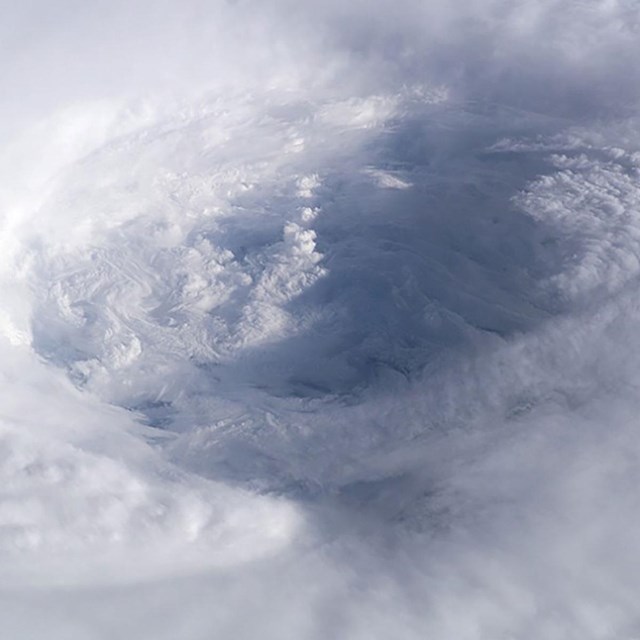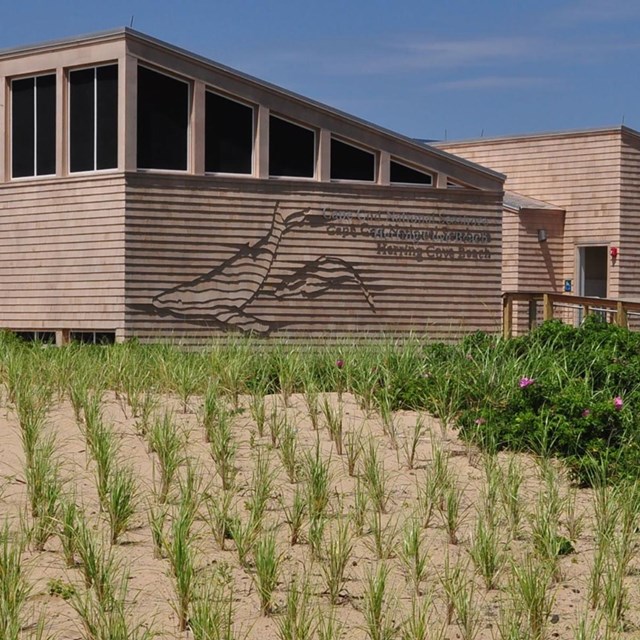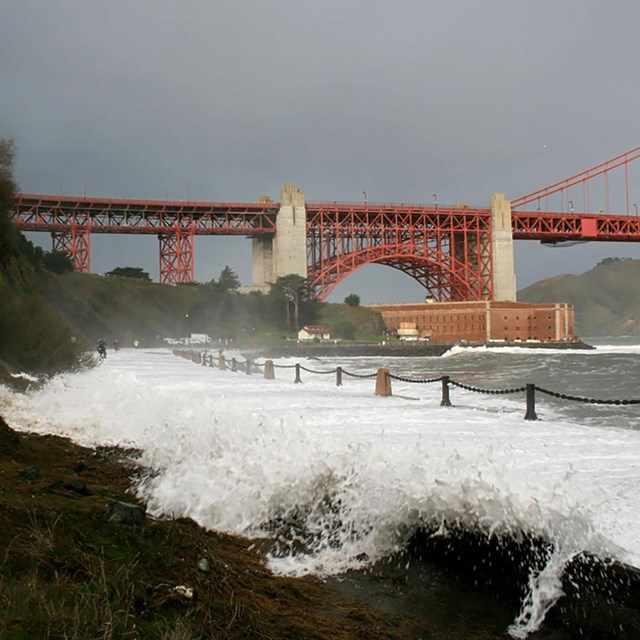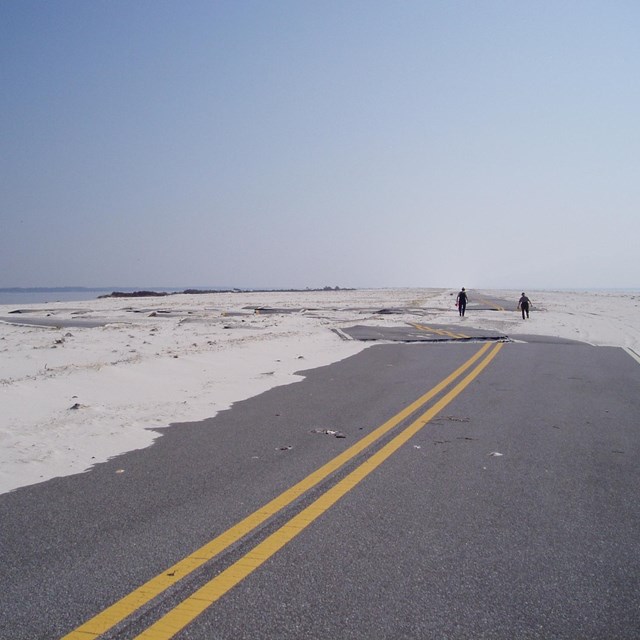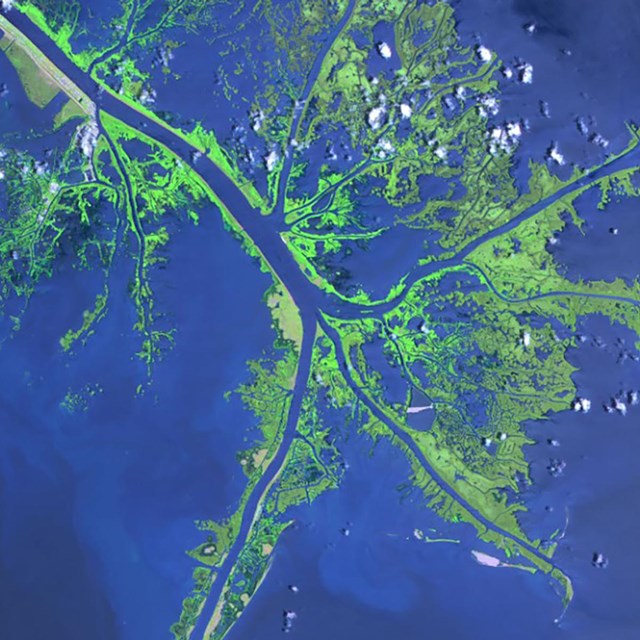
NPS photo.
Introduction
National Park Service management policies for shorelines and barrier islands state that “natural shoreline processes (such as erosion, deposition, dune formation, overwash, inlet formation, and shoreline migration) will be allowed to continue without interference” (National Park Service 2006). You may ask yourself, “Who would interfere?” Even the burliest team of park rangers could not stop a storm. Yet, the National Park System has had a long history of human alterations to shorelines, many of which predate the establishment of parks but continue to impact park resources.
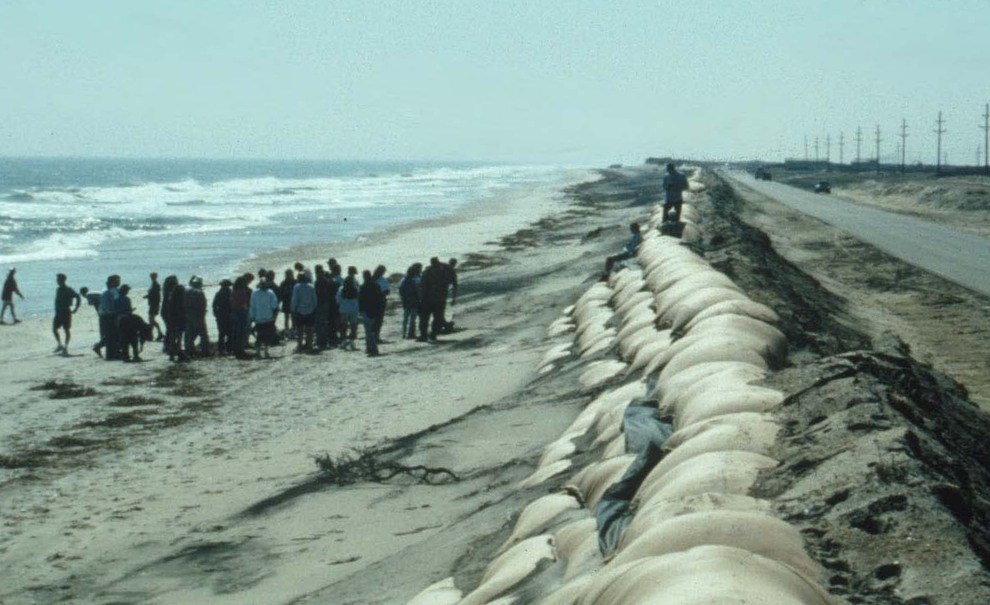
NPS photo.
For example, the National Park Service agreed to protect and maintain a line of barrier dunes constructed by the Civilian Conservation Corps in the 1930s at Cape Hatteras—the first national seashore (authorized in 1937). During the two decades after establishment and initial land acquisition in 1952, the National Park Service spent more than $20 million building sand fences; planting native vegetation; and bulldozing, dredging, and pumping sand in a losing battle of stabilizing the beaches and dunes. The massive attempts of stabilization were finally abandoned in the early 1970s in favor of a more dynamic approach that allowed nature to take its course (National Park Service 2005). However, the North Carolina Department of Transportation continues this practice along portions of Highway 12, which runs through Cape Hatteras National Seashore, in an effort to protect the highway (York 2004).
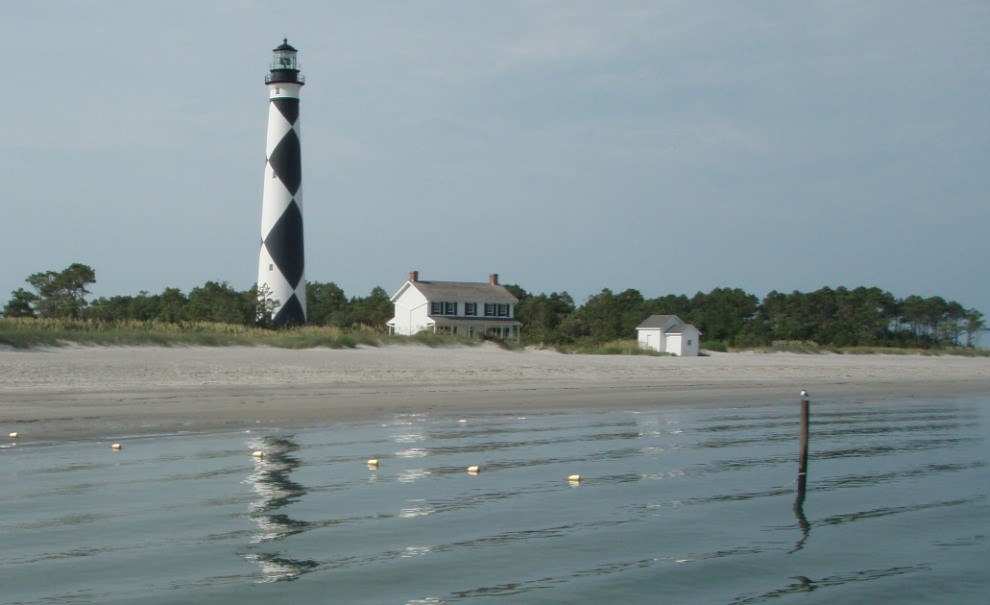
NPS photo.
Depending on a park’s enabling legislation (the federal law that establishes a park unit and describes its particular set of purposes), there are times when the National Park Service may determine that interfering with natural processes is needed to protect significant cultural resources or infrastructure (National Park Service 2003). Because coastal park managers continually strive to achieve a balance between the preservation of historic landmarks (e.g., forts and lighthouses) and the protection of natural ecosystems, modifications to coastal dynamics may be deemed necessary, for instance when severe coastal erosion and storm events detrimentally affect park resources.
Related Links
Last updated: July 16, 2019

